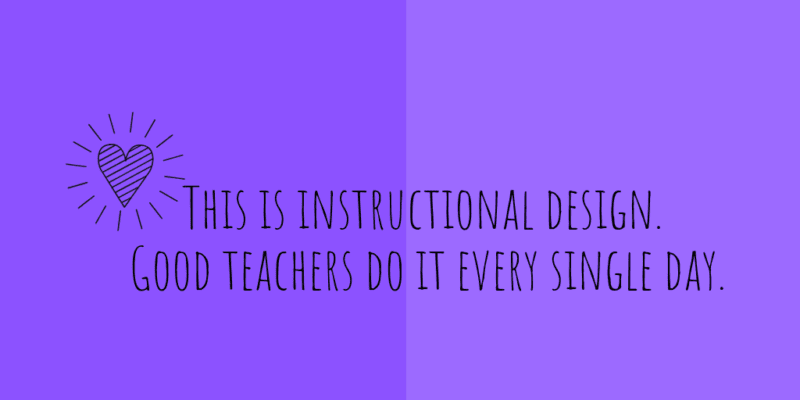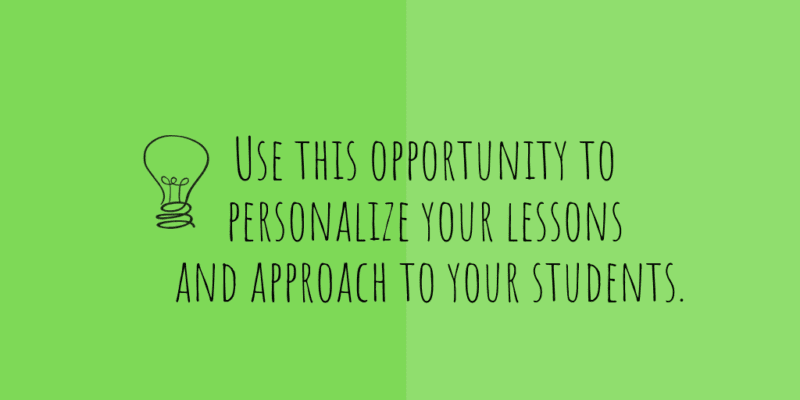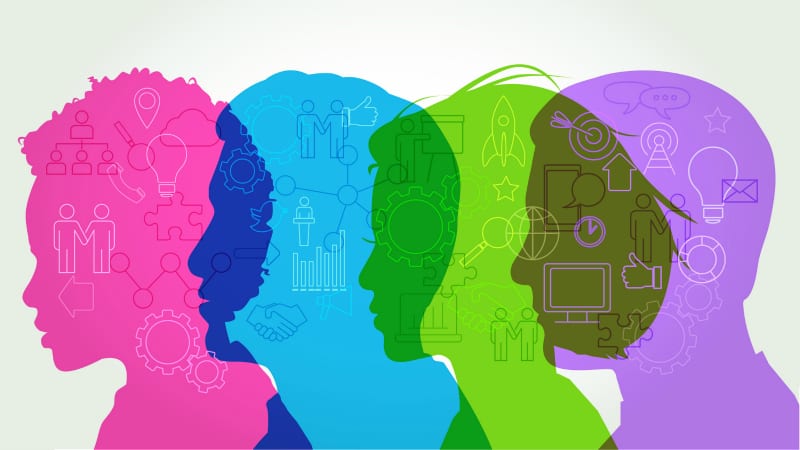You may have heard the term instructional design but not know exactly what it is. The reality is that it’s something most teachers already do. When we make decisions about how we are going to go about our business (aka the business of teaching), we are practicing instructional design. So what exactly is it? What does it look like when it is done well? And, what impact does it have on our students?
Take a look at how instructional design works in language learning by hitting the play button below. Then read on to get more tips on how to incorporate good design into your teaching.
[embedyt] https://www.youtube.com/watch?v=3pMrys9bA0g[/embedyt]
Instructional design is a systematic approach.

The keyword in describing instructional design is systematic. You can watch the video above to get a better idea of what this looks like in practice.
There are many different instructional design systems and models. You might not know them by name necessarily, but chances are you’ll probably recognize the methods and steps. And as you take a closer look, you’ll probably see that you’ve probably already done some of the steps.
For instance, you likely already analyze your learners’ needs, design lesson plans, develop materials to teach the lesson, and evaluate the lesson’s effectiveness. This is instructional design! Good teachers do it every single day.
Do a little prep for a good student experience.

The best instructional design practices suggest teachers learn about students’ lives and cultures. Knowing some obvious things is helpful, like if they’re a language learner or have a learning challenge. But the next step is really getting to know them.
What are their beliefs, traditions, favorite foods, or extracurricular activities? When you get to know your students on a more personal level, it definitely makes a difference in your instructional design and classroom culture. Students relate to this personal connection.
To understand our students, we teachers are constantly analyzing them. We have to find the context that will get them learning; when it comes to students, there is no universal answer.
It starts with curriculum, though. So the first step is to find out what they already know through formative assessments. Can they add? Subtract? How is their phonemic awareness? Whole-word knowledge? What will make them want to learn these concepts? Often, the answer is exciting instructional design.
Once you have all the intel, personalize your lesson plans.

Think about this part like a flow chart. Sometimes we begin with what we want students to know at the end of the lesson. Often, this is dictated by standards. But, students are not driven by standards! They think more about what they have to do, and how it relates to their lives, than what they need to know. This is where it’s so important to personalize.
This is something you can easily do when you get to know your students. In fact, this is one of the best parts about being a teacher. You get to decide! Use this opportunity to tweak what you do to make it work for YOUR students.
You likely know what has worked (and what hasn’t) before, so personalize for more effective understanding overall. For instance, in elementary school science, students study the life cycle of a plant. You need to teach kids each stage, like seed, seedling, flower, and fruit. This also includes learning key vocabulary words.
But it doesn’t have be a boring vocabulary lesson. You can easily adjust how you teach it by adjusting what type of plant you show or reference. There are many ways to make things more personalized and culturally relevant to your students. You can still get in your vocabulary lesson and make it interesting for students at the same time. This variation is good instructional design! Plus, students can tell when their teachers have tailored a lesson to their interests, and it makes them much more eager to learn.
Plan in place? Use materials students will love.

The development of materials is distinct from the lesson plan design in that it is intended for student use. Innovative, immersive, and interesting materials bring the instructional design to life. Students get tired of the same ol’ stuff.
Materials include manipulatives, media, technology tools, worksheets, and anything else you can create or find to help you teach the curriculum. The more relevant and interactive, the more motivating it is for students.
For geography or history, you might create a map. Depending on your learners’ prior experience and preferred learning style, these maps might be made of felt and Velcro for a tactile, reusable experience.
Like the video from above explains, a lesson with language learning could also include media that allow learners to hear and see new vocabulary through the eyes of characters. Media-rich lessons capture and retain student interest, especially when the context is right. This doesn’t mean you have to search far and wide to find good material. You probably already have some excellent resources right at your fingertips. Find those good materials that students will respond to and put them to work.
After the lesson, make sure it worked.

This step is important for so many reasons. First, we can tell if the students have achieved synthesis! Have they, can they, put it all together? Did they truly learn and assimilate the information into their lives?
Assessing students lets us know not only if they learned but if we effectively taught! In addition to analyzing student data, we should reflect on our own experiences and revise our plans and materials to make it better.
In teaching upper high-school writing and research, I always check for proper citations to determine if I explained both when AND how to cite. If I notice a consistent mistake, I may add a deductive lesson based on that idea. When you take time to reflect on what does and doesn’t work, it makes you a better teacher.
But what if it didn’t or isn’t working?

Good instructional design is never complete. If a lesson is floundering, determine if it is the lesson itself or the materials causing the difficulty. Use a variety of resources on a topic and make sure they align with your desired outcomes of students’ cultural context. Don’t give up and keep evolving your approach. Your classroom and your students will excel.
Vista Higher Learning uses instructional design in all of their books and curriculum. To learn more about their approach, check out their website.


